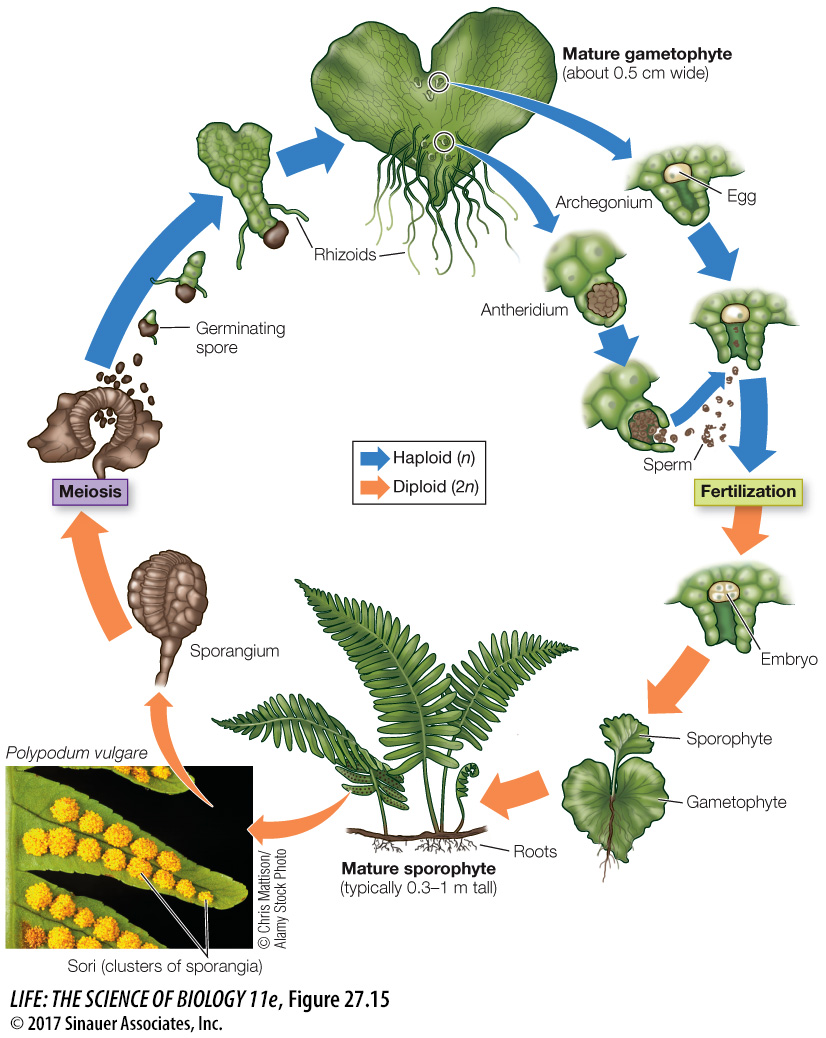Horsetails and ferns constitute a clade

The horsetails and ferns were once thought to be only distantly related. From analysis of gene sequences we now know that they form a clade, the monilophytes. In the monilophytes—
Today there are only about 15 species of horsetails, all in the genus Equisetum. The horsetails have reduced true leaves that form in distinct whorls (circles) around the stem (Figure 27.14B). Horsetails are sometimes called “scouring rushes” because rough silica deposits found in their cell walls make them useful for cleaning. They have true roots that branch irregularly. Horsetails have a large sporophyte and a small gametophyte, both independent of each other.
The first ferns appeared during the Devonian period; today this group comprises more than 12,000 species. Analyses of gene sequences indicate that a few species traditionally allied with ferns may in fact be more closely related to horsetails than to ferns. Nonetheless, the majority of ferns form a monophyletic group.
Although most ferns are terrestrial, a few species live in shallow fresh water (Figure 27.14C). Terrestrial ferns are characterized by large leaves with branching vascular strands (Figure 27.14D). Some fern leaves become climbing organs and may grow to be as long as 30 meters.
In the alternating generations of a fern, the gametophyte is small, delicate, and short-

Activity 27.1 The Fern Life Cycle